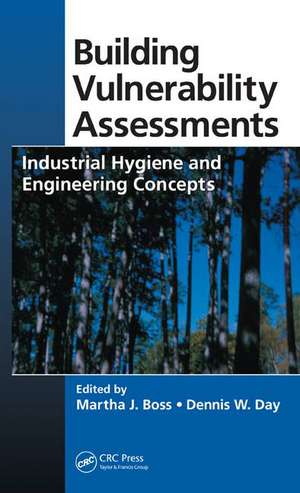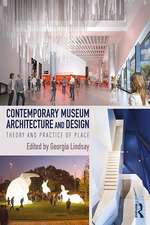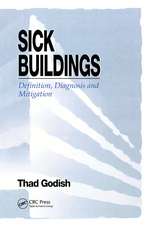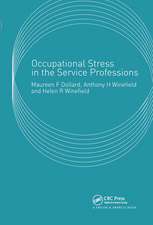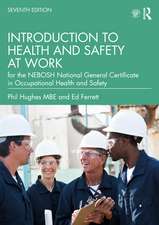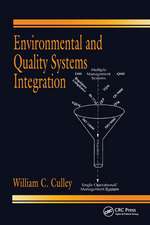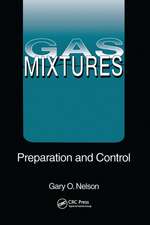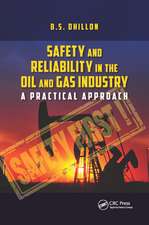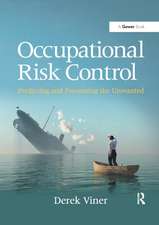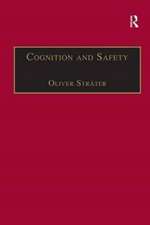Building Vulnerability Assessments: Industrial Hygiene and Engineering Concepts
Editat de Martha J. Boss, Dennis W. Dayen Limba Engleză Hardback – 26 iun 2009
Customized Recommendations for Individual Structures
The book begins with an outline for vulnerability assessments conducted either in-house or in coordination with a third party. The text is presented in a way that facilitates modifications for an organization’s particular needs. The authors present summaries of regulations that are used to determine if chemicals create a risk to off-site locations or constitute a homeland security vulnerability. They also discuss physical security and chemical, biological, and radioactive (CBR) threat potentials.
Highlights the Threat of Biological Contamination
The remainder of the book discusses control systems to reduce vulnerabilities, emphasizing ventilation system controls. Since a building or facility which is already contaminated is easier to contaminate further, the authors put a heavy focus on new, latent, and residual chemical and biological contamination within building infrastructures. The book concludes by presenting basic emergency planning recommendations and offering recommendations for assessment programs and emergency drills.
This volume, comprising the wisdom of scientists and engineers who have dealt in the past with building and site failures, assists future designers and operations and emergency planners in making decisions that may lessen the impact of emergencies and he
| Toate formatele și edițiile | Preț | Express |
|---|---|---|
| Paperback (1) | 377.86 lei 6-8 săpt. | |
| CRC Press – 15 oct 2019 | 377.86 lei 6-8 săpt. | |
| Hardback (1) | 853.03 lei 6-8 săpt. | |
| CRC Press – 26 iun 2009 | 853.03 lei 6-8 săpt. |
Preț: 853.03 lei
Preț vechi: 1218.92 lei
-30% Nou
Puncte Express: 1280
Preț estimativ în valută:
163.23€ • 170.77$ • 135.59£
163.23€ • 170.77$ • 135.59£
Carte tipărită la comandă
Livrare economică 03-17 aprilie
Preluare comenzi: 021 569.72.76
Specificații
ISBN-13: 9781420078343
ISBN-10: 1420078348
Pagini: 442
Ilustrații: 15 b/w images, 10 color images, 43 tables and 50 equations
Dimensiuni: 156 x 234 x 23 mm
Greutate: 0.75 kg
Ediția:1
Editura: CRC Press
Colecția CRC Press
ISBN-10: 1420078348
Pagini: 442
Ilustrații: 15 b/w images, 10 color images, 43 tables and 50 equations
Dimensiuni: 156 x 234 x 23 mm
Greutate: 0.75 kg
Ediția:1
Editura: CRC Press
Colecția CRC Press
Public țintă
Academic and Professional Practice & DevelopmentCuprins
Introduction to Vulnerability Assessments. Assessment: Threat Analysis. Regulations, Building Codes, Industry Standards: Compliance Documentation. Site and Building Features. Chemical Threats. Biological Threats. Radiation and Nuclear Threats. Airborne Hazard: Protection Options. Pressure Differentials and Airborne Contaminant Controls. Filtration. VAC Control Systems. VAC Systems Design Features. Temperature Management Equipment. Piping Systems. Decontamination Methods, Biocides, and Personal Protective Equipment. Building Materials and Decontamination: Discussion of General Decontamination Terms and Method for Specific Building Materials. Decontamination of Ventilation Systems: Discussion of General Decontamination Terms and Methods for Ventilation Systems. Emergency Plans. Acronyms. Index.
Descriere
Chemical, biological, and radioactive (CBR) threats are generally only recognized after a catastrophic event such as terrorism or sabotage occurs. However, many buildings and facilities throughout the world already have these known risk factors. This resource aids building owners and operators in quickly determining appropriate risk management during normal operations and when emergencies occur. It explores ventilation systems, the value of sheltering versus evacuation, design options, decontamination methods, and mechanical systems. It also presents summaries of regulations that are used to determine if chemicals that are present create a risk to off-site locations or constitute a homeland security vulnerability.
